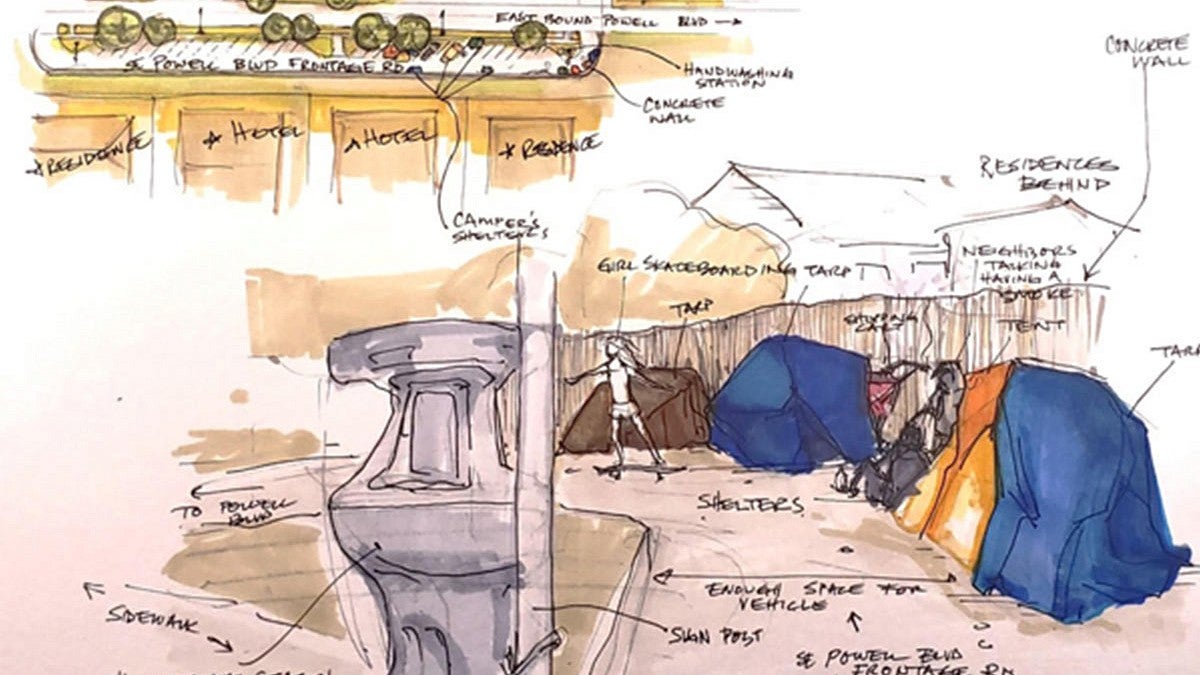
Associate Professor of Landscape Architecture Yekang Ko and Design for Spatial Justice Fellow Cory Parker have found that the field of landscape architecture has a significant role to play in fortifying community resilience and alleviating homelessness, especially in a post-pandemic world.
“Landscape architects can contribute by conceptualizing innovative ideas and initiating a public discussion. For example, what would city parks with pockets of a transitional housing community or rapidly deployed respite shelters look like?” the duo wrote for the American Society of Landscape Architects (ASLA) Professional Practice Networks blog.
The post looks at several projects within the School of Architecture & Environment. For a 2020 seminar “Home, Housing, and Homelessness,” Parker had students interview residents of temporary respite shelters about their safety needs during the pandemic.
In fall 2019, Ko and landscape architect and alumna Shannon Arms (BArch ’11, MArch ’14) taught the studio “Planning for Home: Landscape Approach for Resilient Transitional Housing,” and proposed a systematic approach to the creation of a city-wide housing network that includes emergency shelters, transitional housing communities, and permanent supportive and/or affordable housing.
The story highlights the work of SAE students, in partnership with the City of Eugene’s City Manager’s Office, in conducting a city-wide spatial analysis to identify potential sites for a range of shelter types based on environmental, social, economic, and amenity criteria, and developing a site design.
“Landscape architects, who are used to dealing with controversy and working with diverse publics, can offer ways to integrate temporary housing interventions into the urban landscape…in parks, parking lots, and vacant lands,” Ko and Parker wrote.
Read more about their efforts in ASLA’s “Landscape Architecture Tackles Homelessness and Shelter in the Pandemic.”
